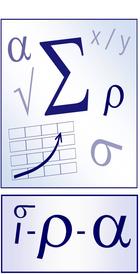
We just published our monthly newsletter (a few days late, but better-late-than-never, right?). And already we’ve gotten comments in on two things: #1 is our puzzle, but a close #2 is my commentary on annualized standard deviation. And, as I point out, the recent source for this discussion is a question that came up at last month’s Performance Measurement Think Tank.
Given the comments, I thought I’d continue the discussion here, with an example that I sent to one of the folks who chimed in. Consider the following:
- Composite’s 36-month annualized return = 11.14%
- Benchmark’s 36-month annualized return = 10.65%
- Composite’s non-annualized standard deviation = 2.36%
- Benchmark’s non-annualized standard deviation = 2.47%
- Composite’s annualized standard deviation = 8.17%
- Benchmark’s annualized standard deviation = 8.54%
Annualized Standard Deviation Question #1
How do you interpret the annualized standard deviations? What meaning do you draw from them?
Annualized Standard Deviation Question #2
Comparing the annualized standard deviation values with their respective non-annualized, do you have any different interpretation?
Annualized Standard Deviation Question #3
Standard deviation is associated with a normal distribution; we typically require at least 30 values in our distribution to have any statistical significance, so the 36 monthly returns meet and exceed this level. And even though returns are not usually normally distributed, they’re close enough that we can still draw inferences from the numbers. This includes the fact that the average return, +/- one standard deviation will capture roughly two-thirds of the distribution. And so, the composite’s average monthly return, +/- its non annualized standard deviation will capture two-thirds (or roughly 24) of the 36 monthly returns. Can we make any similar assessment using the annualized standard deviation?
Why do we annualize standard deviation?
What’s the point in annualizing it in this context? In my view, none, as I am not aware of any.
As you probably know, this statistic is now required for both the composite and its benchmark for GIPS(R) (Global Investment Performance Standards) compliant firms. And I recall someone suggesting that firms should also display their 36-month annualized return along with it. And so, I’ve done that above. What meaning does this provide?
Again, I am not aware of any. There is no relation between the annualized standard deviation and the annualized return.
Why do we annualize standard deviation? I believe because we tend to annualize statistics. But I believe we should be able to draw the same conclusions from a risk perspective by comparing non-annualized composite and benchmark standard deviations as we do by comparing their annualized values.
The roles of Standard Deviation
We cannot lose sight of the fact that standard deviation, within the context of GIPS compliance, serves two purposes:
- As an acceptable measure of dispersion: here, the average account annual return, +/- one standard deviation has relevance, as it gives us a sense of how “tight” the distribution of annual returns is. It lets us know if the manager was consistent in their management of the accounts within the composite’s strategy, or if they were “all over the board.”
- As a proxy for risk: TSG’s research has found that standard deviation is the #1 risk measure. What does it measure? Volatility (or, if you prefer, variability). It’s been used as a risk measure for more than 50 years. It’s what is used by CAPM and the Sharpe ratio, as well as information ratio and other statistics. With this approach, we could care less what the average return is: it has no meaning. If we know only the composite’s standard deviation (annualized or not), it means nothing. But, when we compare it to the benchmark’s, we are able to decide if more (for comparatively higher standard deviation) or less (for a lower standard deviation relative to the benchmark’s) risk was taken.
Let’s consider what I propose as answers to the above questions:
Q#1 Answer
The annualized standard deviation, like the non-annualized, presents a measure of volatility. Since the composite has a lower value than the benchmark, we conclude that less risk was taken. And while Bill Sharpe used non-annualized values in his eponymously named risk-adjusted measure, it is quite common to employ annualized values, and so, the annualized standard deviation would be plugged into the denominator. (i.e., we can annualize the statistics and divide, or divide the un-anualized values and then annualize the result)
Q#2 Answer
NO! The composite’s non-annualized standard deviation, like the annualized, is lower, so we interpret this to mean that less risk was taken.
Q#3 Answer
No, we cannot. That was one of my points in the newsletter, as well as an article I wrote for The Journal of Performance Measurement(R).
We have to keep in mind the difference:
- Are we using standard deviation as a measure of dispersion? Then knowing the average annual return, and having the standard standard deviation, we can identify the span across which roughly two-thirds of our returns fit.
- If we’re using it as a risk measure, then it’s strictly about volatility, and annualizing doesn’t seem to make much of a difference when it comes to comparing the composite and benchmark values.
Note: recall that we are measuring the dispersion of annual returns within the context of GIPS’s dispersion; we aren’t annualizing a monthly standard deviation: the standard deviation is of annualized returns. Contrast this with what we do with risk, where we’re measuring standard deviation of 36 monthly returns. Here is where we annualize the result.
Have a different view? Another opinion? Some insights you want to share?
Please chime in! I would very much like to see other views on this.
The real important point that I wanted to make is that we need to know whether we’re using the statistic as a measure of dispersion (where comparing standard deviation to the distribution’s mean has value) or volatility (where it doesn’t).
